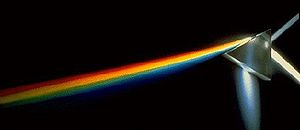
"Por Aquí arde el Puro..."
Seguimos juntando argumentos sobre la historia de la negación sensorial en la historia de la Ciencia Moderna Occidental.Y como la aproximación cuántica no puede obviar lo que la ciencia llama "subjetivismo", pues no es de extrañar que sea en una entrada sobre cuántica donde hallamos encontrado esta distinción (valga la redund) entre distinciones "primarias" y "secundarias"...
Primary/secondary quality distinction
From Wikipedia, the free encyclopedia
The primary/secondary quality distinction is a conceptual distinction in epistemology and metaphysics, concerning the nature of reality. It is most explicitly articulated by John Locke in his Essay concerning Human Understanding, but earlier thinkers such as Galileo and Descartes made similar distinctions.
Primary qualities are properties that objects have independent of any observer, such as solidity, extension, motion, number and figure. These characteristics convey facts. They exist in the thing itself, can be determined with certainty, and do not rely on subjective judgments. For example, if a ball is round, no one can reasonably argue that it is a triangle.
Secondary qualities are properties that produce sensations in observers, such as colour, taste, smell, and sound. They can be described as the effect things have on certain people. Knowledge that comes from secondary qualities does not provide objective facts about things.
Primary qualities are measurable aspects of physical reality. Secondary qualities are subjective.
Contents[hide] |
[edit] History
- “By convention there are sweet and bitter, hot and cold, by convention there is color; but in truth there are atoms and the void”
– Democritus, Fragment 9. [1]
- “I think that tastes, odors, colors, and so on are no more than mere names so far as the object in which we locate them are concerned, and that they reside in consciousness. Hence if the living creature were removed, all these qualities would be wiped away and annihilated”
– Galileo Galilei, The Assayer (published 1623). [2]
- “For the rays, to speak properly, are not colored. In them there is nothing else than a certain power and disposition to stir up a sensation of this or that color.”
– Isaac Newton Optics (3rd ed. 1721, original in 1704). [3]
[edit] Criticism
George Berkeley is a famous critic of the distinction. Berkeley maintains that the ideas created by sensations are all that people can know for sure. As a result, what is perceived as real or true consists only of ideas in the mind. In other words, nothing exists except as ideas in one's mind.
[edit] References
[edit] See also
| This philosophy-related article is a stub. You can help Wikipedia by expanding it. |

No hay comentarios:
Publicar un comentario
yesyukan